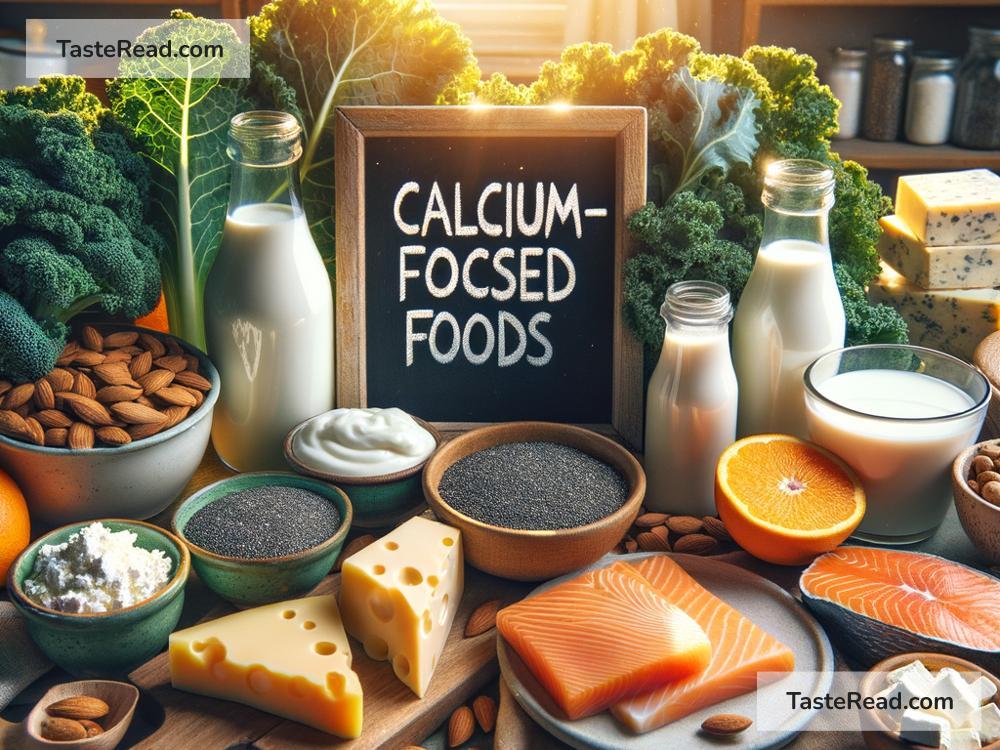Foods That Enhance Calcium Homeostasis: Keeping Your Bones and Body Healthy
Calcium is essential for many functions in your body. It keeps your bones strong, helps your muscles move, allows your nerves to work properly, and aids your blood in clotting when you get a cut. Your body keeps a constant level of calcium in your blood through a process called calcium homeostasis. This balance is managed by your bones, kidneys, and intestines with help from hormones like vitamin D, parathyroid hormone, and calcitonin.
Eating the right foods can make a big difference in supporting calcium homeostasis. In this blog, we’ll explore some of the best foods to help maintain healthy calcium levels in your body. We’ll also cover why these foods are beneficial for your overall health. Don’t worry—we’ll keep it simple and easy to understand!
Why Calcium Homeostasis Matters
Calcium homeostasis ensures your blood has just the right amount of calcium—it shouldn’t be too low or too high. If calcium levels drop too low, your body pulls calcium from your bones to fix the problem. Over time, this can weaken your bones and increase your risk of conditions like osteoporosis. On the other hand, having calcium levels that are too high can harm your heart, kidneys, and other organs.
Eating foods that provide calcium and support your body’s ability to absorb and manage this nutrient can help promote a healthy balance.
Foods Rich in Calcium
Calcium-rich foods are at the top of the list for boosting calcium homeostasis. Here are some examples:
-
Dairy Products
Milk, yogurt, and cheese are excellent sources of calcium. They’re easy for most people to absorb and contribute significantly to your overall calcium intake. Low-fat or non-fat options work just as well and are healthier choices for those watching their fat intake. -
Leafy Green Vegetables
Vegetables like kale, spinach, and collard greens are rich in calcium. However, spinach contains compounds called oxalates, which make it harder for your body to absorb its calcium. So while spinach is still nutrient-packed, kale and collard greens may be better choices for calcium absorption. -
Fortified Foods
Many processed foods are fortified with calcium, meaning calcium has been added to them. Examples include plant-based milks (like almond, soy, or oat milk), breakfast cereals, and orange juice. These are great options if you don’t eat dairy or want variety in your diet. -
Fish with Edible Bones
Sardines and canned salmon with bones are high in calcium. The bones are soft and safe to eat, giving you a boost in calcium while also providing heart-healthy omega-3 fats. -
Tofu and Tempeh
Tofu made with calcium sulfate and tempeh are excellent non-dairy sources of calcium. They’re also packed with protein and work well in a variety of dishes. -
Seeds and Nuts
Sesame seeds, chia seeds, almonds, and other nuts and seeds can provide small amounts of calcium that contribute to your daily needs. They also contain magnesium, which plays a role in calcium absorption.
Foods That Boost Calcium Absorption
Your body doesn’t automatically absorb all the calcium you eat. It needs certain nutrients and conditions to help with this process. Here are some foods that improve calcium absorption and help with its regulation:
-
Foods Rich in Vitamin D
Vitamin D helps your intestines absorb calcium more efficiently. You can find vitamin D in fatty fish like salmon and mackerel, egg yolks, and fortified foods (like cereals and milk). Your body also makes vitamin D when your skin is exposed to sunlight. -
Magnesium-Rich Foods
Magnesium plays a critical role in activating vitamin D, which enhances calcium absorption. Foods like nuts (almonds, cashews), seeds (pumpkin, sunflower), whole grains, and legumes are good sources of magnesium. -
Phosphorus in Balanced Amounts
Phosphorus works with calcium to strengthen your bones. Foods like dairy, fish, lentils, and nuts contain phosphorus. However, too much phosphorus (often found in processed meats and sodas) can reduce calcium absorption, so balance is key. -
Vitamin K-Rich Foods
Vitamin K helps regulate bone metabolism and promotes calcium balance. Leafy greens like kale, spinach, and broccoli are good sources, along with fermented foods like natto (a Japanese soy product).
Foods to Limit for Better Calcium Balance
Certain foods can interfere with calcium homeostasis if consumed in excess:
-
Salty Foods
High salt intake can cause your body to lose calcium through urine. Cutting back on processed and salty foods can help keep calcium levels stable. -
Caffeine
Drinking too many caffeinated beverages (like coffee or tea) can slightly reduce calcium absorption. Moderation is key—enjoy your coffee, but don’t overdo it. -
Sugary Drinks
Soft drinks that contain phosphoric acid (like colas) can disrupt calcium absorption and harm bone health over time. Stick with water or healthier drink options instead.
Tips for Supporting Calcium Homeostasis
- Eat a Balanced Diet: Include a mix of calcium-rich foods and foods that improve calcium absorption (like vitamin D and magnesium-rich items).
- Stay Active: Regular exercise strengthens bones and helps regulate calcium in your body.
- Get Some Sun: A little sunlight goes a long way in prompting your body to make vitamin D, which supports calcium absorption.
- Limit Harmful Foods: Avoid excessive salt, caffeine, and sugary sodas that can interfere with calcium homeostasis.
Conclusion
Your body works hard to keep calcium levels balanced, and the foods you eat play a big role in supporting this process. By including calcium-rich foods, along with nutrients like vitamin D, magnesium, and vitamin K, you can enhance calcium homeostasis and maintain strong bones, healthy muscles, and proper nerve function.
Remember, a little effort and attention to your diet can go a long way toward supporting your body and keeping you feeling your best. Start incorporating these foods into your meals today, and give your body the help it needs to stay balanced and healthy!


